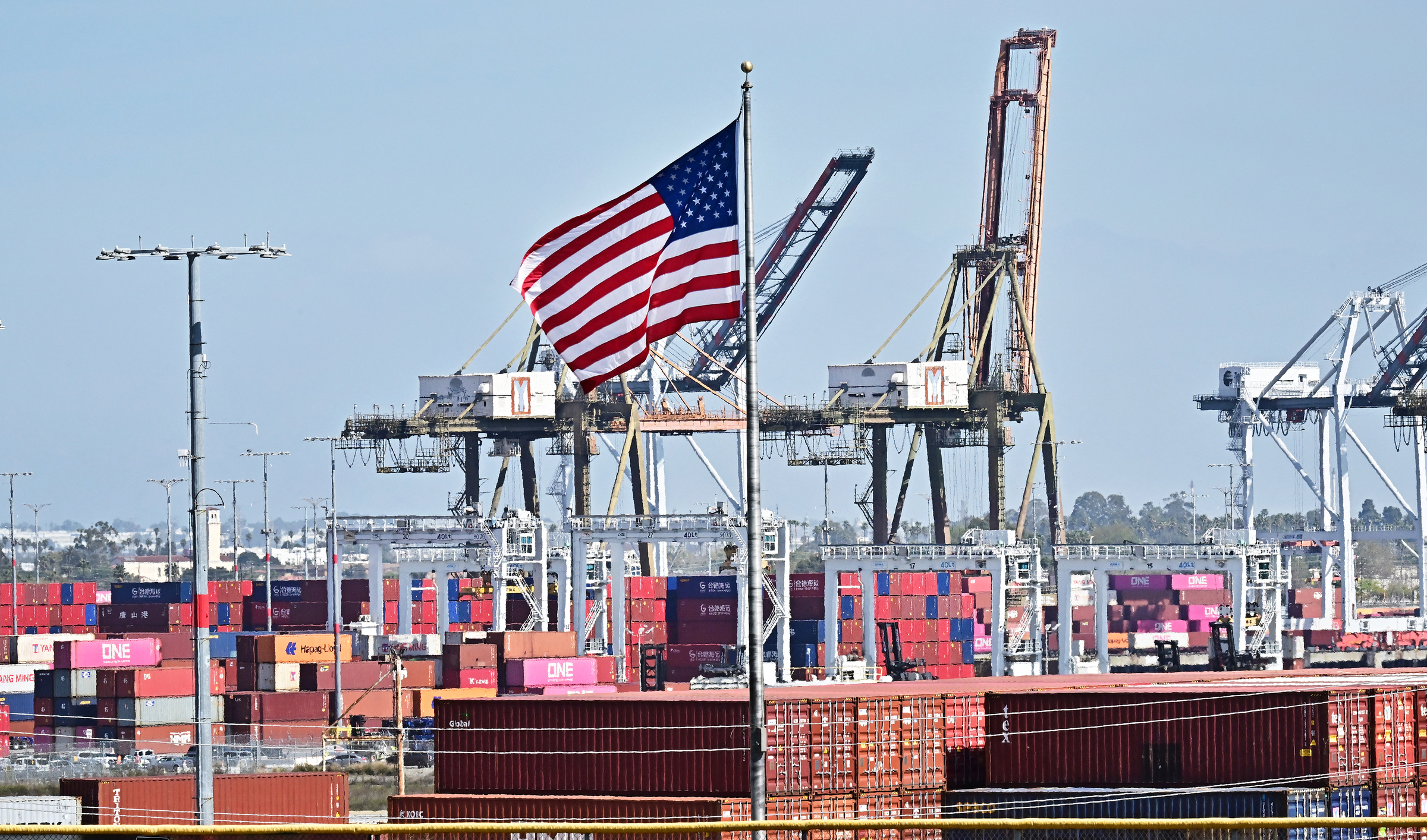A report released last week by the California Budget & Policy Center (CBPC) and cited by the Guardian on 18/9, reveals that about 7 million Californians, or 17.7% of the population, couldn't afford basic necessities in 2024.
In 2021, California's poverty rate reached a record low of 11%. However, as Covid-19 relief policies ended, the rate increased both statewide and nationally.
According to the CBPC, the 2024 rate is "not statistically different" from the 2023 level. People of color, renters, and children are the most affected groups. The child poverty rate has doubled since 2021.
 |
Containers at the Port of Long Beach, California, in 3/2024. Photo: AFP |
Containers at the Port of Long Beach, California, in 3/2024. Photo: AFP
California had implemented temporary economic safeguards, such as providing shelter for the homeless, delaying evictions for renters unable to pay, and offering rental assistance. But the poverty rate rebounded once these measures expired.
"These figures reflect a worrying trend that began when officials cut anti-poverty investments, which were enacted to mitigate the impact of the Covid-19 pandemic. This shows that poverty is essentially the result of policy decisions," the report states.
"When officials halted these effective policies, previous progress was immediately reversed, leading to the largest national increase in poverty rates in 50 years, with the situation particularly severe in California," the report says.
Despite having the highest poverty rate in the country, California is one of the wealthiest states with a high average income and the most billionaires.
With a population of 39 million, California is considered an economic powerhouse. If it were a separate country, it would rank among the world's top 5 economies. However, the standard of living varies drastically across the state, with the high costs of housing, healthcare, and living making it difficult for many people to meet their basic needs, even if employed.
Duc Trung (According to the Guardian, LA Times)












